Louis Braille museum
Educational file
Musée Louis Braille
13 rue Louis Braille
77700 COUPVRAY
Tél/fax : 01 60 04 82 80
musee.louisbraille@orange.fr
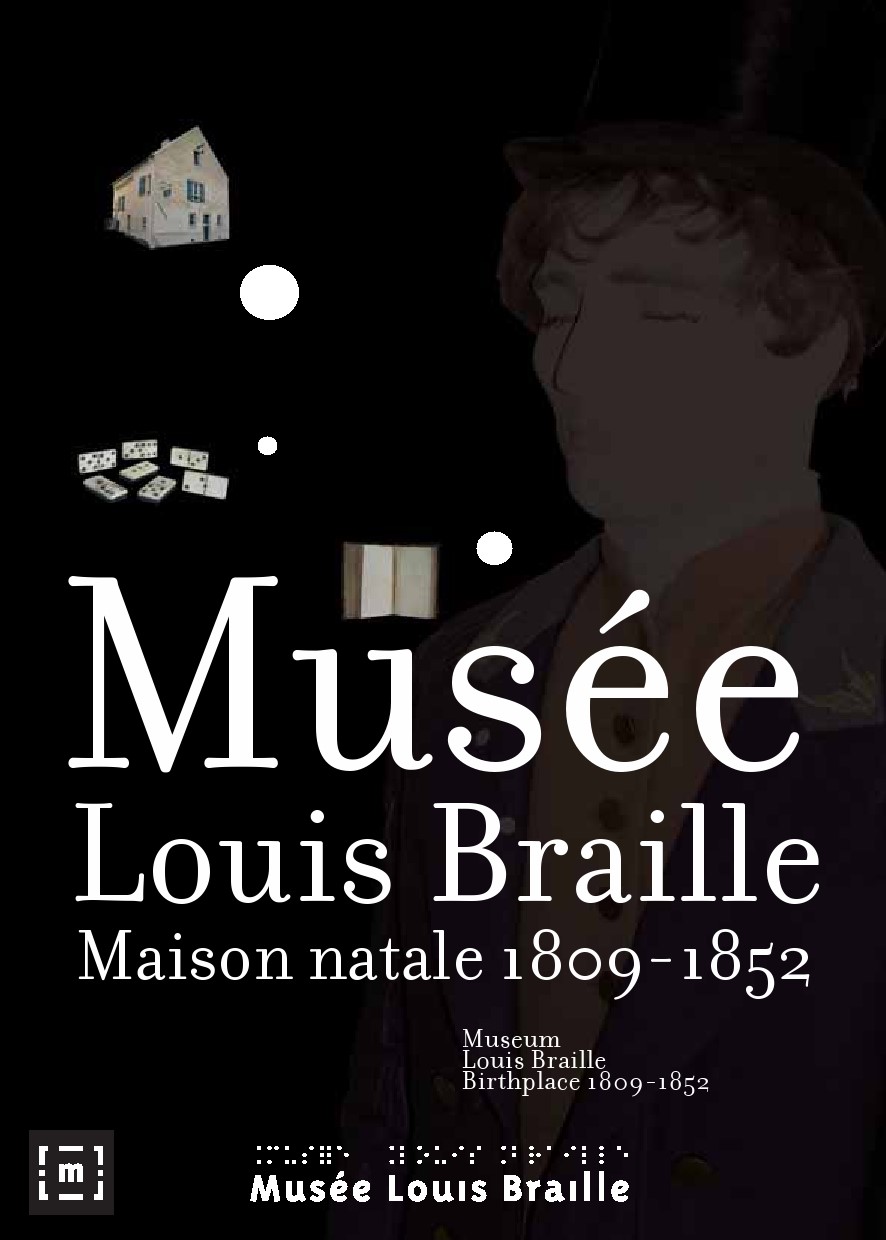
SUMMARY
reated for teachers to facilitate their visit to the Louis Braille Museum, this file includes:
A presentation of the museum ………………………………………………………………………… page 1
A map of the museum ………………………………………………………………………....………… page 2
A presentation of the museum visit room by room .........................…………. Page 3 to 4
The different workshops offered ……………………………………………………………… page 5 to 7
A chronological reminder ……….………………………………………………………………………. page 8
The model of the birthplace of Louis Braille ……………………………………………….......page 9
A discovery survey course (questions and games in the appendix) ........ pages 10 to 13
Documentary sources to be used in class on visual impairment ……........ page 14 to 15
Practical information ………………………………………………………………...........… page 16 to 17
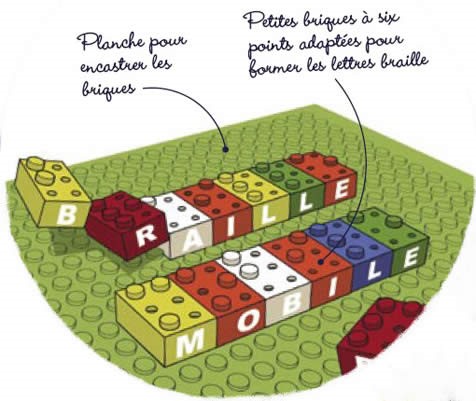
Where is The Louis Braille Museum in Coupvray?

Why introduce the Louis Braille museum to children ?
The activity and daily life of a Briard family
Through the Maison Natale by Louis Braille, a true witness architecture, we can recreate the daily life of a village in the 18th-19th century. There is an emotional relationship between Louis Braille, his family and Coupvray.
To revive these disappeared village activities, these ancient customs, the Braille Museum presents, a varied set of objects and furnishings, very revealing of another way of living.
In the common room, we discover certain objects from the period:
The organization of daily life: the bread oven, the cheese loaf, the sink, ...
The wedding, the bridal bouquet.
The adornment, the clothing of a young Briarde, the headdresses, the scarves.
Furnishings, buffet and dining table.
The decor of the table, the dishes, the glasses, the pots,
As well as in the saddler's workshop of Father Simon-René Braille:
We find in this workshop some of the equipment and furniture, used by a saddler for the exercise of his profession (from father to son):
The wooden workbench, very marked by long use; the typical chair with its seat made of leather straps.
The collar former. It allowed to give the shape to the collar, according to the neck of the horse.
The sewing pliers, which the harness maker held, clamped between his legs, to hold the leather.
Saddlery tools (paring knives, awls, upholstery, templates, etc.)…
Children thus become aware of the craft work of the time but also of the hardness of the work. It is also in this workshop that we trace the accident of Louis Braille.
Louis Braille and the invention of his writing and reading system
Louis Braille’s story can touch all audiences, but especially children because it was at the age of 5 that Louis Braille lost his sight.
And at 15, he already creates his own alphabet: he uses 6 raised dots in each square. For each letter, he places the points differently. Here is an example below:
By touching these points, a blind person can identify each point representing the letters. Since then, Louis Braille has been recognized as one of the most important inventors.
Braille was thus created in 1824 but it took more than 20 years for it to be accepted by clairvoyants in France.
In Louis Braille’s former bedroom, there are various embossed writing books, Braille tablets and Braille typewriters to explain the evolution of Braille writing to the present day.
Today, braille is universal. It is modern enough to adapt brilliantly to new technologies.
It is important within the visit, to make children aware that thanks to Braille, blind people can finally access knowledge and culture. We thus evoke the importance of NICT and information technology, which have made it possible to develop tools adapted to the blind: speaking watches, telephone with voice control, Braille printers, ...
Introduction to Braille
The braille initiation workshop aims to discover what braille is, to give the basics of the alphabet and, thanks to the visit, to make a comparison with what has been seen or will be seen at museum, related to the Braille tablet for example or the Braille typewriter.
This workshop allows in particular to "play down" the visual handicap by showing that a blind person can live "like everyone" with some adaptations.
 This practice makes it possible to clearly explain the fundamental principles of Braille and to remember that it is an alphabetical writing: a Braille character for a letter.
This practice makes it possible to clearly explain the fundamental principles of Braille and to remember that it is an alphabetical writing: a Braille character for a letter.
At the end of the workshop, each child is invited to write his first name in Braille .
Educational material :
A braille alphabet with the correspondence in the "black" alphabet (this is how the printed writing is designated)
A braille tablet with a punch
Adapted sheets (120 grams).
Sensory workshops
Learning to citizenship inevitably requires respect and understanding of the other. These workshops will be an opportunity to discover, better know and better understand people with visual disabilities.
Raising awareness among young people is essential because it is from a very young age that prejudices are built. Working on these stereotypes, social and family, from childhood is the best chance for prejudice to be erased more quickly.
The objective of these workshops is to help remove stereotypical images and change the way children look at the visual impairment. It is also to advocate tolerance, good citizenship, learn to live with difference, to control his fear of the other and learn and experience solidarity. Thus, children will participate in workshops on the senses with blindfolds , in order to understand how blind people manage to develop other senses, without sight.
The touch
Children will have to recognize different materials and shapes:
- Aluminum foil and cotton
- Wood shapes and cardboard boxes (animals, letters and geometric shapes)
Hearing
Children will be asked to recognize sounds (from everyday life, animals ...) that we will make them listen to. Like traffic noises or animal cries.
Smell
Multiple odors contained in bottles will be recognized by children.
- Mint
- Pepper
- Cinnamon
Game of scented plants (mint-chocolate, rose, apple, eucalyptus ...). sensory workshops and blind tasting workshops are complementary.
In an educational approach and awareness of visual impairment, we advise you to combine the two workshops in order to link education to practice.
Blind tasting workshop
Taste
The exercise will consist in identifying, various ingredients (liquids or solids) used in cooking, contained in small jars.
- Cocoa powder,
- Icing sugar,
- Flavored water ....
Some key dates of Louis Braille
4 January 1809 : birth of Louis Braille.
1812 : Louis Braille is injured in the eye in his father's harness shop. He gradually lost his sight.
15 February 1819 : he entered the Royal Institution for the Young Blind in Paris where children learned to read on works with letters in relief, and to write like clairvoyants
1820 : Charles Barbier exhibited at Dr Guillié at IRJA the principle of sonography.
1822 : Louis Braille experiments with the Barbier process and begins his own research.
1825 : his alphabet is finished. He used combinations of dots and lines for certain letters.
1833 : Louis Braille was appointed professor.
May 1834 : Louis Braille présente son système à l’Exposition de l’Industrie.
1841 :Louis Braille presented his system at the Exposition de l'Industrie. With Foucault, he published the raphigrapher: the shape of letters is represented by dots.
6 January 1852 : death of Louis Braille at the IRJA in Paris.
10 January 1852 : burial of Louis Braille in Coupvray.
6 January 1952 : the world whole celebrates the hundredth anniversary of the death of Louis Braille. The Maison Natale de Louis Braille was bought soon after to be transformed into a museum.
21 June 1952 : transfer of the body of Louis Braille to the Pantheon. His hands remain in an urn on his tomb in Coupvray.
The model of the birthplace of Louis Braille
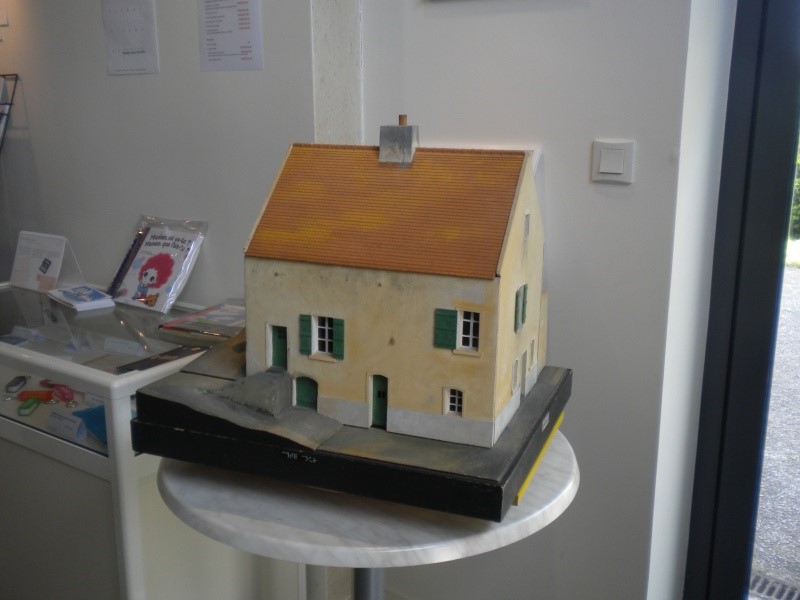
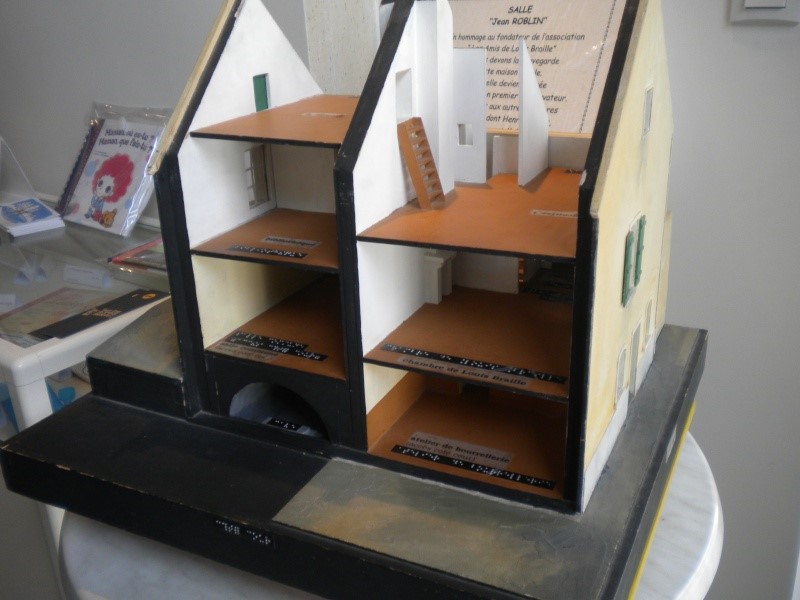
In the reception room is a model of the birthplace of Louis Braille which allows blind people to touch and imagine the layout of the rooms, but also to understand how the house was built.
We can therefore first explain the exterior architecture of a typical Briard house and then show the complex arrangement of the rooms, designating the ones we are going to visit.
In the footsteps of Louis Braille's life…. A little genius…
At what time lived Louis Braille ?
- 17th century
- 18th century
- 19th century
What are the parents of Louis Braille?
Can you recognize these objects there? What room were they in?
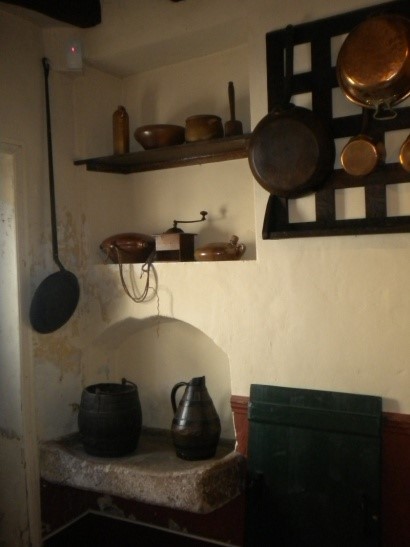 -------------------------------------------
-------------------------------------------
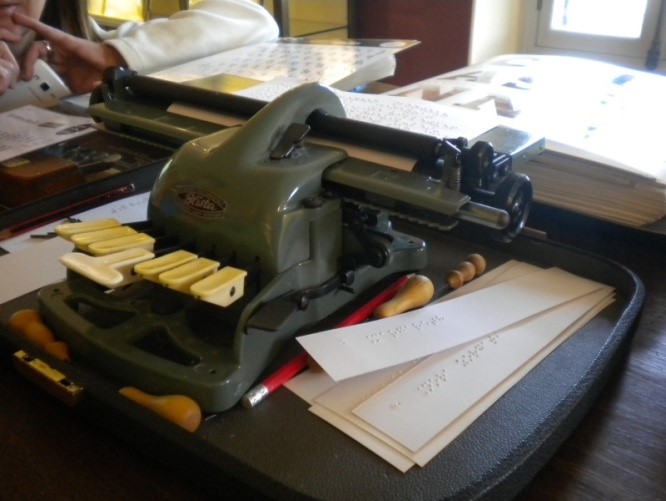
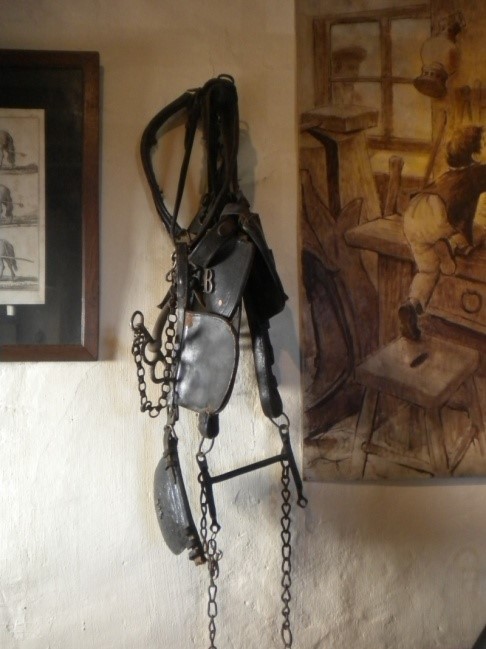
------------------------------- ------------------
|
|
Louis Braille's favorite game?
Louis Braille was a very inventive and playful boy, he loved this game. He had a special one for the blind. Unfortunately he cannot find them. ... Can you help him find them at his place?
Congratulations! You found the dominoes of Louis Braille …….….
If you understood correctly, the Braille writing is made to be read on the finger. With Braille, you can code numbers and letters. Each dot thus forms a letter (see the Braille alphabet opposit)
Now it's up to you to decode the following word:


 |

Like Louis, write your first name in Braille:
Bravo! You are unbeatable on the life of Louis Braille and on the braille system…
We will check that! Check with an x the true or false answers….
|
|
True
|
False |
|
Louis Braille was born blind. |
|
|
|
Louis Braille was the oldest of his brothers and sisters. |
|
|
|
Louis Braille was injured with a "pruning knife". |
|
|
|
Louis Braille should have become a saddler like his father and his grandfather. |
|
|
|
Braille is done from right to left. |
|
|
|
The tool used to make raised dots is called a "fish". |
|
|
|
Louis Braille was a student and then a professor at the Royal Institute for the Young Blind. |
|
|
|
This institute for young blinds was located in Coupvray. |
|
|
|
Louis Braille's body is in the Pantheon and his hands are in the Coupvray cemetery. |
|
|
Thank you for participating in this game and see you very soon with all your family !
To go further on the life of Louis Braille…
We can cite many sites, books and films on visual impairment explained to children and on the life of Louis Braille, but we will retain a few to encourage children to tolerate and respect each other. of the Federation of the Blind and Visually Impaired of France (FAF) which works for "the moral, intellectual and social improvement of all the blind in France and abroad" : http://www.faf.asso.fr/
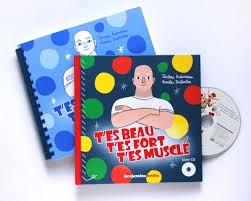 Cd books and braille and large print books with raised game pages are available at the Louis Braille Museum (Editions Benjamin Media), as well as educational sheets for each book: Embossed game pages are suitable for those children: from 3 to 6 years old, so that everyone, sighted as visually impaired, can exercise their sense of touch. The child develops his sense of listening and, by extension, of memory, synthesis, restitution.
Cd books and braille and large print books with raised game pages are available at the Louis Braille Museum (Editions Benjamin Media), as well as educational sheets for each book: Embossed game pages are suitable for those children: from 3 to 6 years old, so that everyone, sighted as visually impaired, can exercise their sense of touch. The child develops his sense of listening and, by extension, of memory, synthesis, restitution.
The TV movie "A light in the night", a fictionalized story of a blind man looking for the "matrix of Louis Braille" directed by Olivier Guignard (2x90 minutes) on France 2, broadcast on January 6 and 7, 2009. “In the eyes of Tristan” produced in 2009 by Stéphane Lebard (26 minutes): Tristan is in CE2. He lives with his mother and twin brother Théo. Together, they face the care of Tristan's severe visual impairment.
- National Federation for the Integration of Deaf and Blind People in France. : "A visually impaired child, Jojo a pupil like the others". Carbon-White. 14p.
- APHP. Mission Handicap. Visual impairment of children and adolescents. 2008: http://www.aphp.fr/documents/mission_handicap/publications/handicap_visuel_enfant.pdf
- Documentary resources for the class: “Away from the eyes, near the heart”. T. LENAIN Nathan. 1997 (Theme: blindness).
 Internet resources for teachers of visual blindness: http://www.enfant-aveugle.com
Internet resources for teachers of visual blindness: http://www.enfant-aveugle.com
Also available, this very educational book for 7/9 year olds, which is at the Louis Braille Museum boutique: “Louis Braille, the child of the night” by Margaret Davidson and illustrated by André Dahan, Editions Folio Cadet, on 18 September 2002.
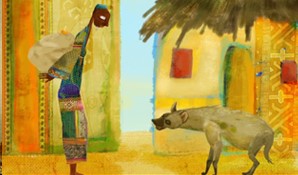
- You can also approach in class this tale from Senegal: "the hyena and the blind" by Pape Faye: www.conte-moi.net
INFORMATION
Musée Louis Braille- Maison Natale, 13, rue Louis Braille-77000 COUPVRAY
Tél/Fax: 01.60.04.82.80 –mail : musee.louisbraille@orange.fr
Summer hours (April 1 to September 30): open every day except Monday.
Visits from 10 a.m. to 12 p.m. and 2 p.m. to 5 p.m.
Winter hours (October 1 to March 31): open every day except Monday.
From 2 p.m. to 5 p.m.
Friday is dedicated to you by reservation.
Each visit lasts one hour and may be accompanied by an hour-long Braille initiation workshop and / or sensory workshops and blind tasting.
Closed 1 january, 1 may et 25 december.
MEANS OF ACCESS:
By car: A4 motorway - Exit 14 Disneyland Paris.
By train: From Gare de l'Est, take the direction of Meaux and stop at Esbly, then line 6 towards Coupvray (Touarte stop).
By RER A: direction Chessy Disneyland Park, Val d´Europe stop, then bus line 6 towards Coupvray (Touarte stop).
By school bus: Park in the museum parking lot (at the bottom of Coupvray).
Possibility of picnicking on site in the museum garden or in the workshop room, depending on the weather.